Abstract
Purpose:
To evaluate one-year clinical results of CrystalensⓇ (AT-45, Eyeonics, CA, USA) accommodating IOL implantation.
Methods:
In this retrospective study, 25 eyes of 18 patients had phacoemulsification and CrystalensⓇ accommodating IOL implantation. Distance and near visual acuity (VA) during the 12-months were measured.
Results:
At two months, uncorrected distance visual acuity (VA) of 13 eyes (52.0%) and 21 eyes (84.0%) were 20/25 and 20/40 or better, respectively. At six months, 11 eyes (44.0%) and 21 eyes (84.0%) were 20/25 and 20/40 or better, respectively. At 12 months, 11 eyes (44.0%) and 17 eyes (68.0%) were 20/25 and 20/40 or better, respectively. At two months, the uncorrected near VAs of 11 eyes (44.0%) and 17 eyes (68.0%) were 20/25 and 20/40 or better, respectively. At six months, 9 eyes (36.0%) and 16 eyes (64.0%) were 20/25 and 20/40 or better, respectively. After 12 months, 6 eyes (24.0%) and 16 eyes (64.0%) were 20/25 and 20/40 or better, respectively.
References
1. Cumming JS, Ritter JA. The measurement of vitreous cavity length and its comparison pre− and postoperatively. Eur J Implant Refract Surg. 1994; 6:261–72.

2. Cumming JS, Slade SG, Chayet A. Clinical evaluation of the model AT-45 silicone accommodating intraocular lens. Ophthalmology. 2001; 108:2005–10.
3. Cumming JS, Colvard DM, Dell SJ, et al. Clinical evaluation of the Crystalens AT-45 accommodating intraocular lens: results of the U.S. Food and Drug Administration clinical trial. J Cataract Refract Surg. 2006; 32:812–25.
4. Kim JH, Park CS, Chung TY, Chung ES. Clinical Evaluation of AT-45 Implantation. J Korean Ophthalmol Soc. 2007; 48:368–75.
5. Küechle M, Seitz B, Langenbucher A, et al. Comparison of 6− month results of implantation of the 1CU accommodative intraocular lens with conventional intraocular lenses. Ophthalmology. 2004; 111:318–24.
6. Mastropasqua L, Toto L, Nubile M, et al. Clinical study of the 1CU accommodating intraocular lens. J Cataract Refract Surg. 2003; 29:1307–12.

7. Dogru M, Honda R, Omoto M, et al. Early visual results with the 1CU accommodating intraocular lens. J Cataract Refract Surg. 2005; 31:895–902.

8. Findl O, Kriechbaum K, Menapace R, et al. Laser interferometric assessment of pilocarpine-induced movement of an accommodating intraocular lens: a randomized trial. Ophthalmology. 2004; 111:1515–21.
9. Alio JL, Tavolato M, De la Hoz F, et al. Near vision restoration with refractive lens exchange and pseudoaccommodating and multi-focal refractive and diffractive intraocular lenses: comparative clinical study. J Cataract Refract Surg. 2004; 30:2494–503.
Figure 1.
Uncorrected distant visual acuity after CrystalensⓇ accommodating intraocular lens implantation, according to the follow-up period (n=25).
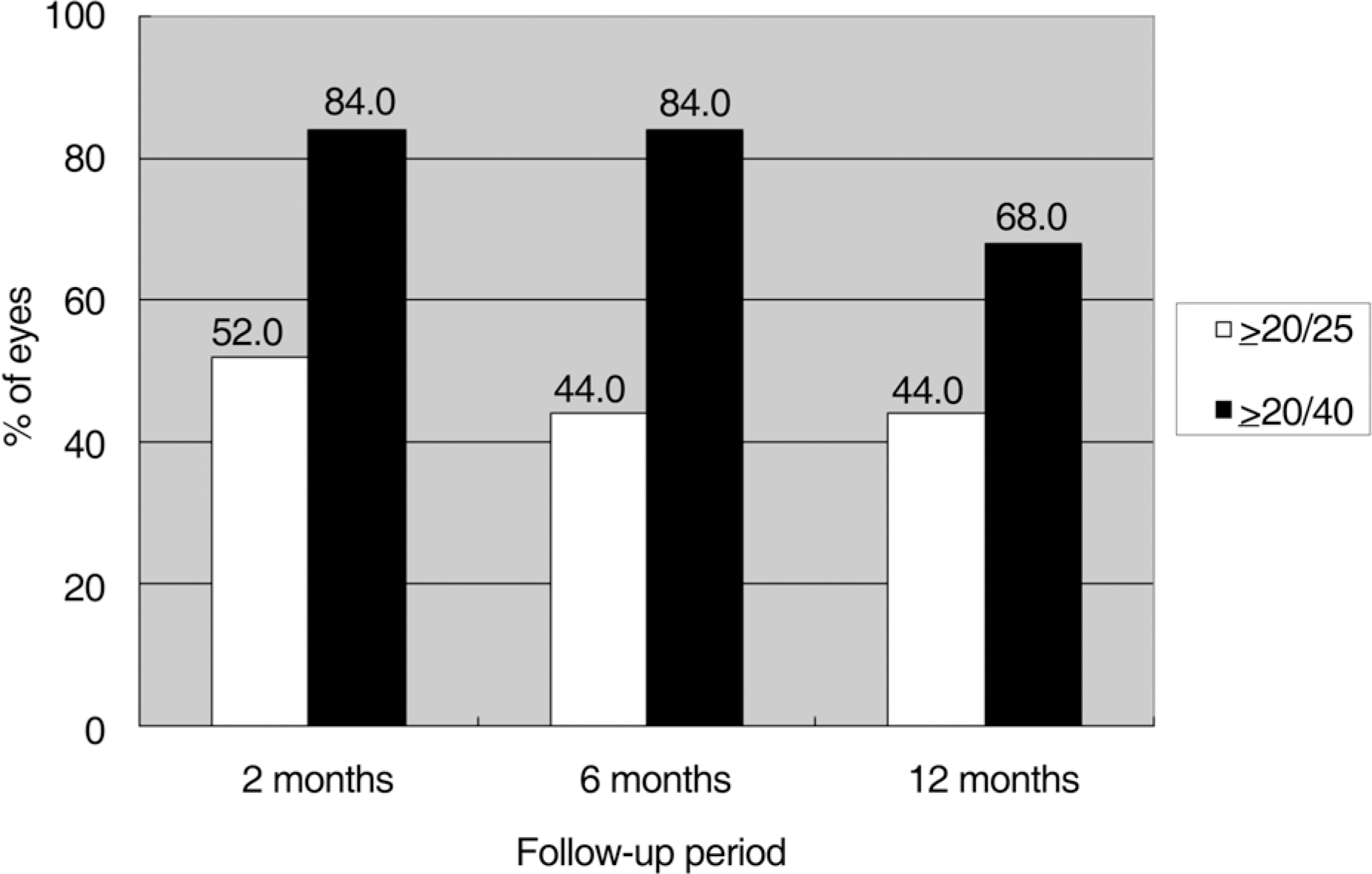
Figure 2.
Uncorrected near visual acuity after CrystalensⓇ accommodating intraocular lens implantation, according to the follow-up period (n=25).
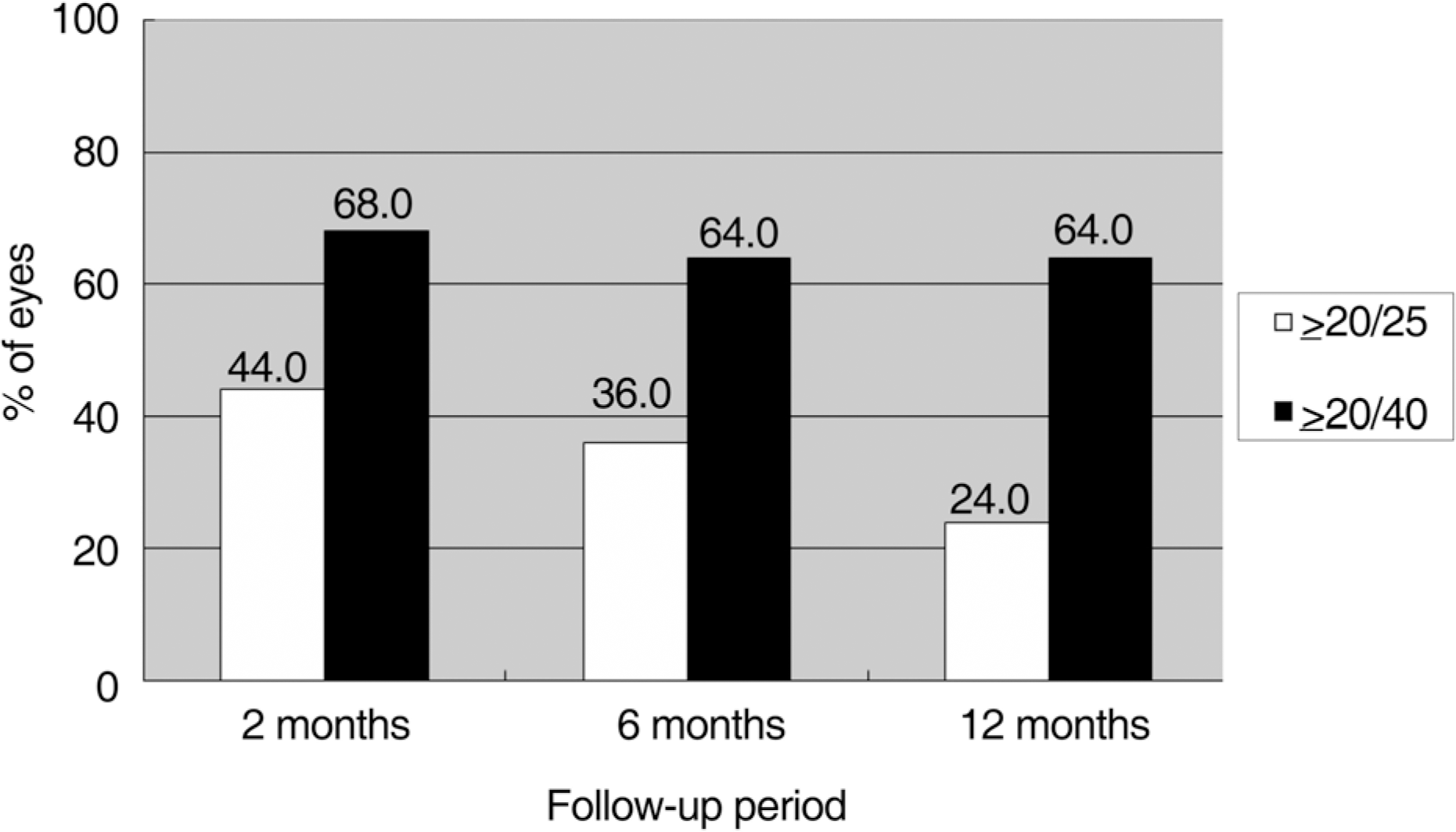
Figure 3.
Best corrected distant visual acuity after CrystalensⓇ accommodating intraocular lens implantation, according to the follow-up period (n=25).
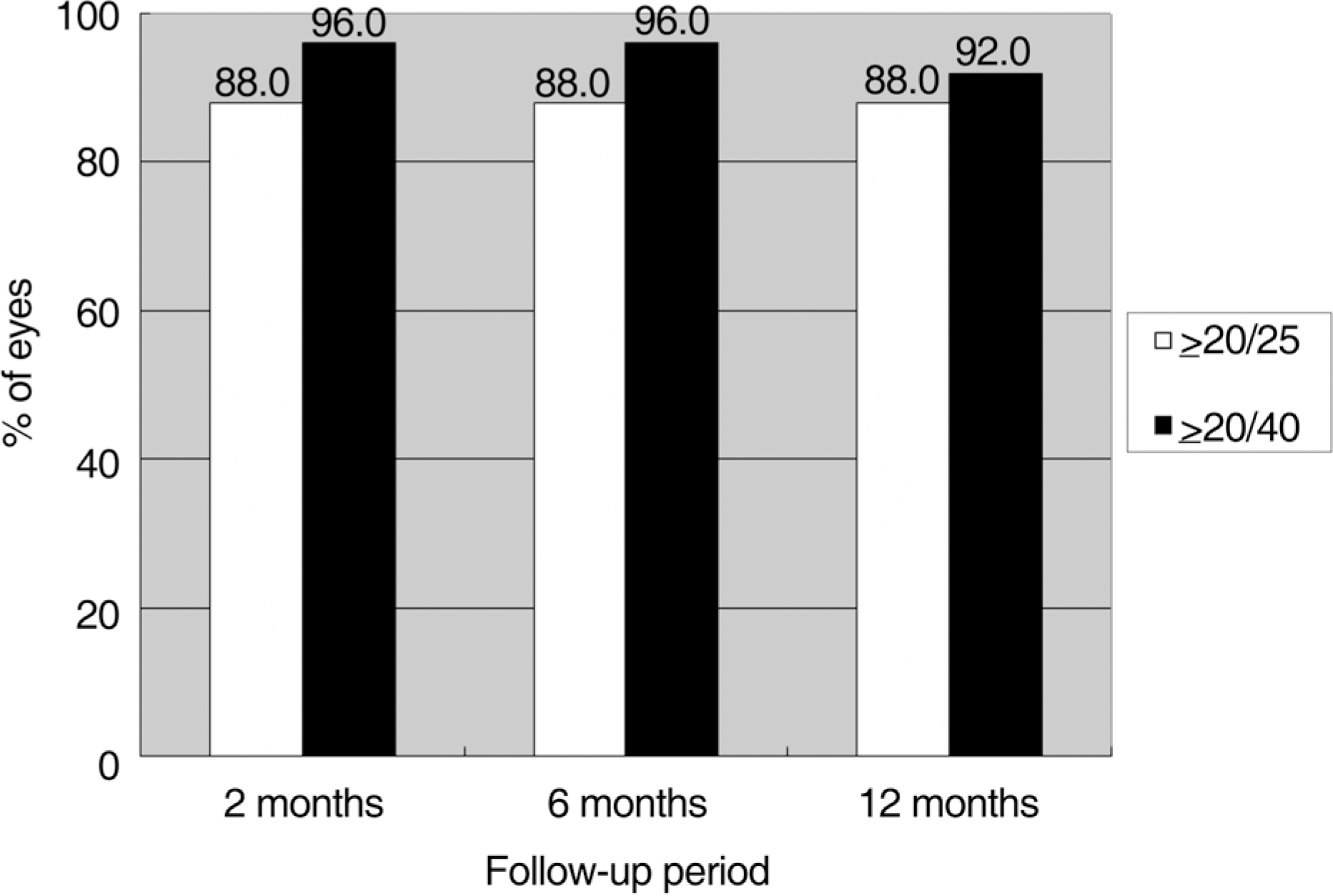
Figure 4.
Best corrected near visual acuity after CrystalensⓇ accommodating intraocular lens implantation, according to the follow-up period (n=25).
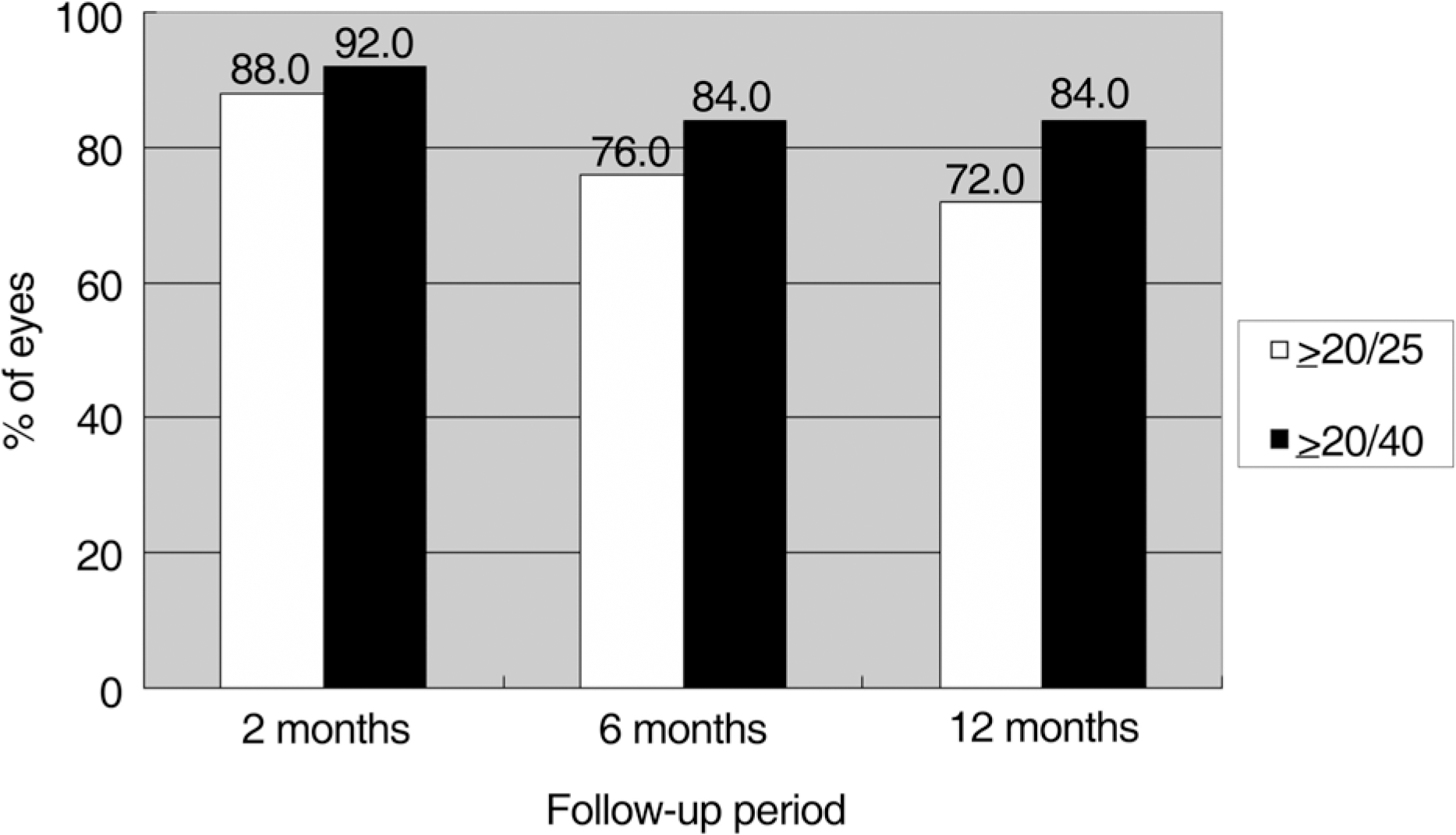




 PDF
PDF ePub
ePub Citation
Citation Print
Print


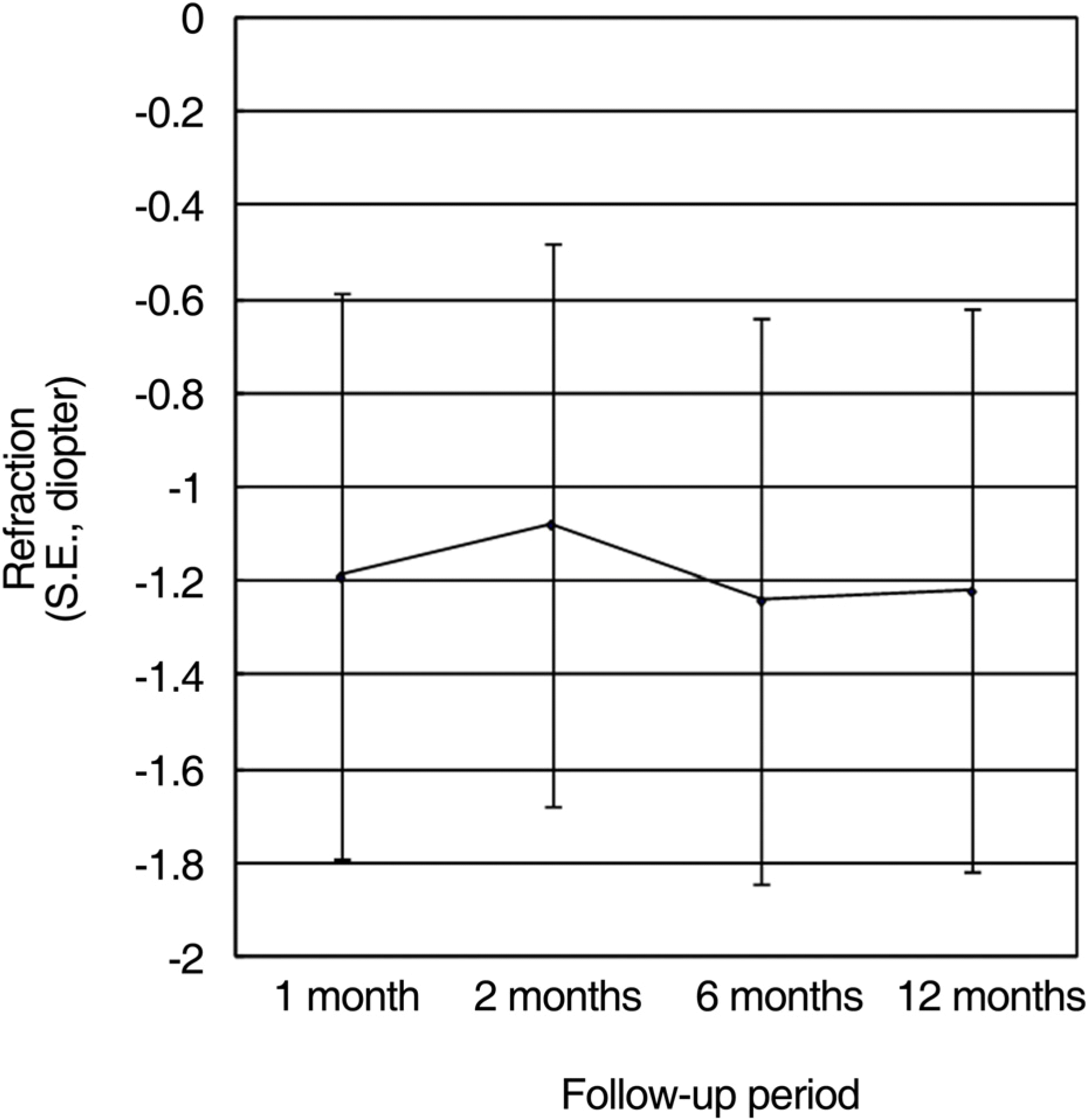
 XML Download
XML Download